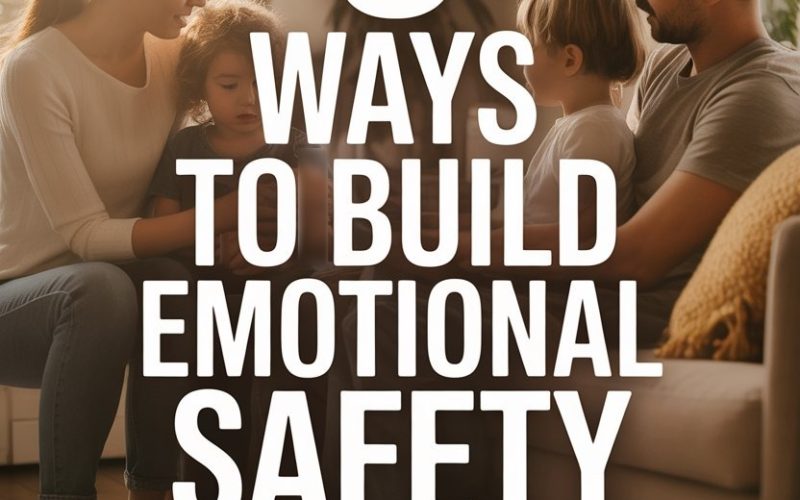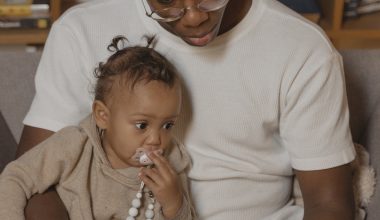Busy parents, this one’s for you.
If you’ve ever wondered why your child saves their biggest tears, loudest grumbles, or wildest giggles for home, you’re not alone.
Home is meant to be the softest place to land—a safe cocoon in a world that often feels like it’s running on triple espresso.
Emotional safety doesn’t require a Pinterest-worthy playroom or daily mindfulness hour; it flourishes in small, everyday moments.
Here’s how to help it take root, even if your dinner is fish fingers (again) and your living room looks like a LEGO tornado just touched down.
1. Open Ears and Softer Words
Kids need your ears more than your encyclopedic wisdom or masterful life hacks. Easier said than done when your mind is juggling work emails, school newsletters, and that ever-growing pile of laundry that seems to have achieved sentience.
But research shows that children who feel heard by their caregivers are more likely to develop resilience and healthy emotional regulation (Harvard Center on the Developing Child).
When your child shares, even if it’s about why grapes are traitors (the green ones, not the purple, obviously), give them your focus.
Nod, maintain eye contact, and offer “Mm-hmm”s that say, “I’m here, I get it.” The goal isn’t to solve—just to be present.
And when it’s your turn to speak, choose words like you’re selecting ripe avocados: gently and with care. “I see that you’re upset” or “You sound disappointed” instead of “Oh, stop fussing.”
Little translations like this signal to your child that their feelings are valid, not inconvenient.
2. Predictable Rituals, Not Rigid Routines
Emotional safety loves a bit of predictability. No one’s suggesting you run the house like a boarding school (unless your soul absolutely craves colour-coded schedules… in which case, teach us your ways).
Rituals—repeatable, comforting moments—help children know what to expect. That stability does wonders for anxious brains.
It could be as simple as a silly handshake each morning, pizza Fridays, or sharing the “best and worst” parts of your day at dinner (burnt garlic bread counts as both).
Studies like this one from American Psychological Association show that family rituals boost emotional wellbeing and foster secure attachments.
Missed a bedtime story because someone discovered a mystery rash at 8:45pm? No worries. Consistency comes from returning to rituals as soon as life allows, not from perfection.
3. Repair After Ruptures
No one, and I mean no one, gets through parenting without the odd thundercloud moment. You snap. They shout. Someone slams a door. (The cat flees under the sofa.)
Emotional safety doesn’t mean never messing up; it means knowing how to repair when you do.
The magic phrase? “I’m sorry.” Not the “Sorry you feel that way” type—kids can sniff that out faster than you can say “screen time limit.” Opt for, “I’m sorry I yelled earlier. I was frustrated, but that wasn’t fair to you.”
This teaches children that mistakes are repairable, and relationships can withstand storms. It models vulnerability, accountability, and the wonderful art of apologising with sincerity (Dr. Dan Siegel).
Forgiveness is a team sport in families. If you’re raising future apologisers (and forgivers), you’re doing something right.
4. Boundaries With Heart
Some parents worry that boundaries and emotional safety don’t mix. Not true.
Loving limits are the fence around your child’s emotional playground—they don’t strangle freedom, but they do keep everyone from tumbling off a metaphorical cliff.
Describe boundaries as what can happen, not just what can’t. “We use gentle hands with each other,” instead of “Don’t hit your sister.”
Maintain calm consistency—your reaction shouldn’t depend on whether you’re running late or have had your second coffee.
And yes, setting boundaries will prompt pushback. (Nothing says “I love you” like a child arguing bedtime is a violation of their human rights.)
Hold firm, but explain why the rule exists. “We all need sleep to feel good tomorrow. I know you wish you could stay up—me too, sometimes.”
This approach, sometimes called authoritative parenting, has been shown to raise children who are both secure and flexible. Bonus: it makes you less likely to shout things you’ll regret at 7:59am.
5. Emotional Language and Laughter
Every family develops its own language—inside jokes, pet names, the code words for “I need a break before I lose my marbles.” Giving children a robust emotional vocabulary is like handing them the ultimate toolbox for life’s curveballs.
Label your feelings out loud, even if it’s just, “Wow, I’m feeling overwhelmed by the mess in here!” Encourage your kids to do the same, without judgment.
Picture books and storytime are great for this, too. “How do you think the bear felt when he lost his hat?” (Deeply betrayed, probably.)
Don’t underestimate the power of humour. Laughter is the glue in family connection, a pressure valve when tempers rise, and a shortcut to emotional closeness.
Shared giggles can turn tension into togetherness faster than you can say “tickle monster.” According to research, laughter actually reduces stress hormones—yes, even the stress of stepping on a rogue toy car at midnight.
If your family’s jokes are mostly about bodily functions, congratulations: you’re right on track.
Making Your Home Emotionally Safe—Even When You’re Tired
No parent gets this perfectly right. Emotional safety isn’t a checklist to complete before bedtime; it’s a promise you make (and remake) every day.
There will be days when you have no patience left for rituals, when boundaries are wobbly, and when nobody remembers to label their feelings beyond “hangry.”
That’s okay.
Connection happens in the million imperfect moments—when you listen to yet another retelling of the world’s longest playground story, when you apologise without blame, when you laugh at the chaos because, honestly, what else can you do?
You’re building safety every time you try. And that’s more than enough.





